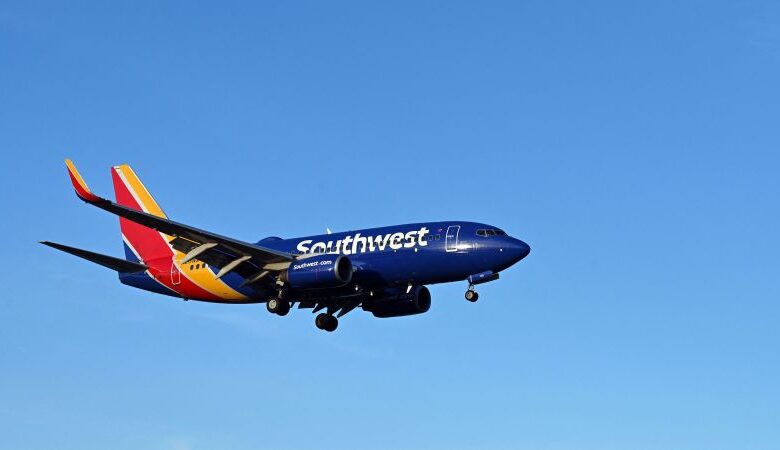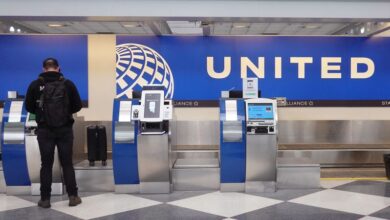Why Southwest is melting down

A punishing winter storm that dumped multiple feet of snow across much of America led to widespread flight cancellations over the Christmas holiday. By Monday, air travel was more or less back to normal – unless you booked your holiday travel with Southwest Airlines.
More than 90% of Tuesday’s US flight cancellations are Southwest, according to flight tracking website FlightAware. Southwest canceled 2,500 flights. The next highest: Spirit Airlines with 75.
Southwest warned that it would continue canceling flights until it could get its operations back on track. The company’s CEO said this has been the biggest disruption he’s seen in his career. The Biden administration is investigating.
What gives?
Southwest had a combination of bad luck and bad planning.
The storm hit Chicago and Denver hard, where Southwest has two of its biggest hubs – Chicago Midway airport and Denver International airport.
More bad luck: The storm hit just as the so-called tripledemic surged across America, leaving people and their families sick with Covid, the flu and RSV. Although Southwest says it was fully staffed for the holiday weekend, illness makes adjusting to increased system stress difficult. Many airlines still lack sufficient staff to recover when events like bad weather cause delays or flight crews max out the hours they’re allowed to work under federal safety regulations.
But Southwest
(LUV) also hurt itself with an aggressive schedule and by underinvesting in its operations.
Southwest’s schedule includes shorter flights with tighter turnaround times, which are causing some of the problems, Kathleen Bangs, a FlightAware spokesperson, told CNN.
“Those turnaround times bog things down,” Bangs said.
Stranded customers have been unable to get through to Southwest’s customer service lines to rebook flights or find lost baggage.
Employees also said they have not been able to communicate with the airline, the president of the union that represents Southwest’s Flight Attendants told CNN Monday.
“The phone system the company uses is just not working,” Lyn Montgomery, President of TWU Local 556, told CNN’s Pamela Brown. “They’re just not manned with enough manpower in order to give the scheduling changes to flight attendants, and that’s created a ripple effect that is creating chaos throughout the nation.”
The problems Southwest faces have been brewing for a long time, said Captain Casey Murray, the president of the Southwest Airlines Pilots Association.
“We’ve been having these issues for the past 20 months,” he told CNN. “We’ve seen these sorts of meltdowns occur on a much more regular basis and it really just has to do with outdated processes and outdated IT.”
He said the airline’s operations haven’t changed much since the 1990s.
“It’s phones, it’s computers, it’s processing power, it’s the programs used to connect us to airplanes – that’s where the problem lies, and it’s systemic throughout the whole airline,” he said.
Southwest CEO Bob Jordan, in a message to employees obtained by CNN, acknowledged many of Murray’s concerns, and promised the company will invest in better systems.
“Part of what we’re suffering is a lack of tools,” Jordan told employees. “We’ve talked an awful lot about modernizing the operation, and the need to do that.”
He said the airline is “committed to and invested in” improving its systems, but “we need to be able to produce solutions faster.”
The US Department of Transportation said it is investigating.
“USDOT is concerned by Southwest’s unacceptable rate of cancellations and delays & reports of lack of prompt customer service,” the agency tweeted. “The Department will examine whether cancellations were controllable and if Southwest is complying with its customer service plan.”
To recover, Jordan told the Wall Street Journal the company plans to operate just over a third of its schedule in upcoming days to give itself the ability for crews to get into the right positions.
If this is all ringing a bell, that’s because this isn’t the first time Southwest’s service melted down in epic fashion. In October 2021, Southwest canceled more than 2,000 flights over a four-day period, costing the airline $75 million.
Southwest blamed that service meltdown on a combination of bad weather in Florida, a brief problem with air traffic control in the area and a lack of available staff to adjust to those problems. It has admitted it was having service problems caused by short staffing even before the thousands of canceled flights stranded hundreds of thousands of passengers.
Similar to this month’s service mayhem, Southwest fared far worse than its competitors last October. While Southwest canceled hundreds of flights in the days following the peak of October’s disruption, competitors quickly returned to normal service.
Later that month, on a call with Wall Street analysts, then-CEO Gary Kelly said the company had made adjustments to prevent a similar meltdown in the future.
“We have reined in our capacity plans to adjust to the current staffing environment, and our ontime performance has improved, accordingly,” said Kelly on October 21. “We are aggressively hiring to a goal of approximately 5,000 new employees by the end of this year, and we are currently more than halfway toward that goal.”
And, just like the latest disruption, the Southwest Airlines Pilots Association claimed the cancellations were due to “management’s poor planning.”
– CNN’s Ross Levitt contributed to this report
Get Best News and Web Services here







